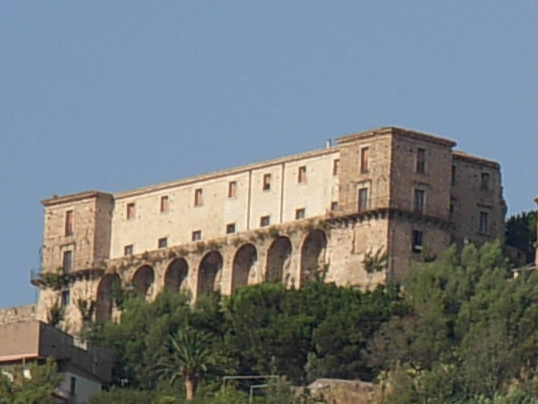

History
The current fortress is the work of architect Ermenegildo Sintes who, in 1764, converted the castle into a summer residence for Count Fulco Antonio Ruffo.
The building is thus the result of a series of reconstruction works that the castle has undergone over the centuries. In fact, the building was erected on the ruins of the ancient Swabian-Angevin fortress, built on angular towers and large terraces, from which it is possible to see the marina below.
The first castle built in Nicotera was erected by the Norman Duke Robert the Guiscard in the second half of the 11th century to house a large military garrison to protect the coast and the town. To complete the conquest of southern Calabria, the fortress was handed over to his brother, Grand Count Roger the Norman, to serve as the administrative centre for the military structure, for the eventual conquest of neighbouring Sicily. The castle has been continuously destroyed and rebuilt throughout its life, due both to devastating earthquakes (in particular the earthquake of 27 March 1638) and the destruction wrought by Saracen assaults in 1074 and 1085; or the curious episode of 1284, when the castle was destroyed completely by the armed troops led by the Aragonese admiral Roger of Lauria, the man behind the expulsion of the Angevins from Calabria. The fortress was later rebuilt by Roger of Lauria himself.
With the advent of Frederick II, both the city and the castle underwent a process of expansion and fortification according to the Swabians’ artistic style, mainly with the construction and expansion of an arsenal near the port. Frederick II was the responsible for the main development of the town of Nicotera, so that the castle played a major role in the town’s layout.
During the course of its history, the castle hosted illustrious figures, such as St. Bruno of Cologne, St. Ludwig of Anjou, Pope Urban II, Joachim of Fiore and the Empress Constance of Altavilla
